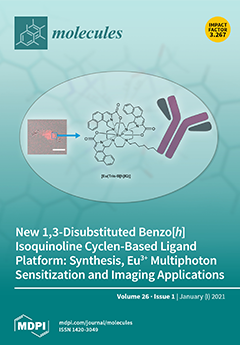The crystallization behavior of the metastable
form of triacylglycerols (TAGs) plays a critical role as a precursor for the crystallization of more stable
and
forms for various applications in food and pharmaceutical products. However, precise analysis of the crystallization
[...] Read more.
The crystallization behavior of the metastable
form of triacylglycerols (TAGs) plays a critical role as a precursor for the crystallization of more stable
and
forms for various applications in food and pharmaceutical products. However, precise analysis of the crystallization kinetics of
has not been performed, likely due to its rapid and complex behavior. This paper presents the observation results of the initial stages of the isothermal crystallization kinetics of
forms of 1,3-dipalmitoyl-2-oleoyl-glycerol (POP), 1,2-dipalmitoyl-3-oleoyl-
rac-glycerol (
rac-PPO), and molecular compound (MC) crystals of a POP/
rac-PPO (1/1) mixture (MC
) using synchrotron radiation time-resolved X-ray diffraction and polarized optical microscopy. In all the TAGs,
crystals with a worm-like morphology started to grow rapidly in the first stage. Then, the
crystals slowly transformed into more stable forms in different manners for different TAG samples. In POP, the conversion was simple, as the
-2 form transformed into
-3, whereas in
rac-PPO, the lamellar distance values of the
-2 form continuously decreased with time and changed into the
-3 form. In the MC
crystals, in contrast, separate crystallization of
-2 of a
rac-PPO fraction initially occurred, followed by the crystallization of
-2 of POP, and the two
forms merged into
-2 of MC
. This separate crystallization was caused by large differences in the crystallization kinetics of the
forms of POP and
rac-PPO.
Full article






